
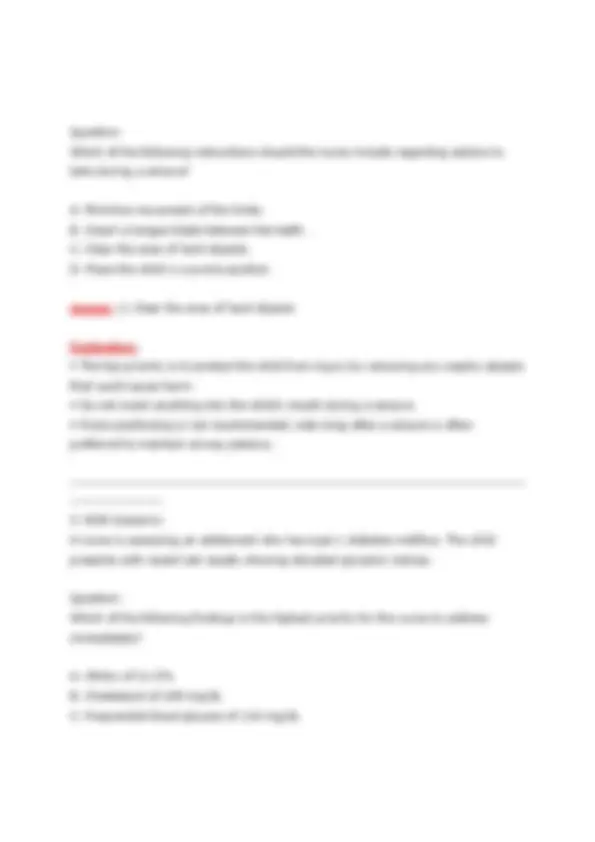
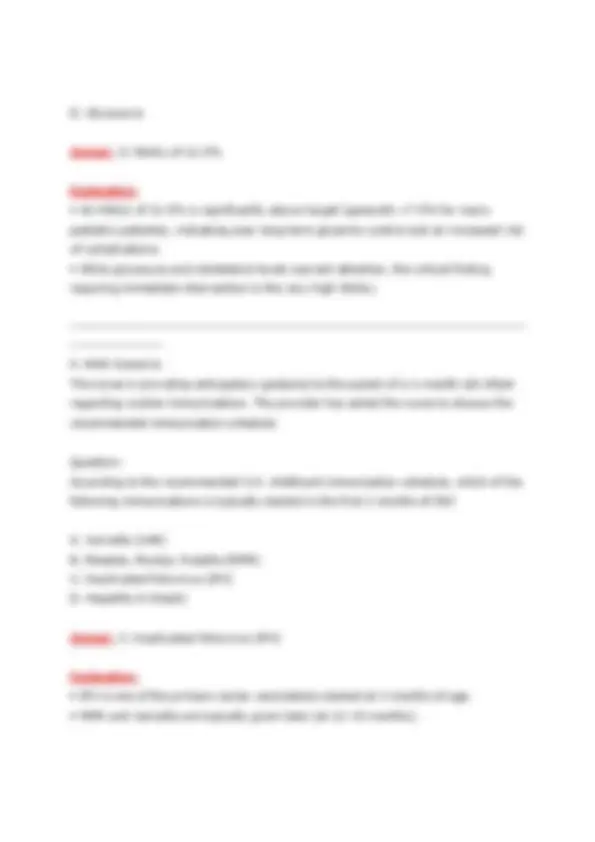
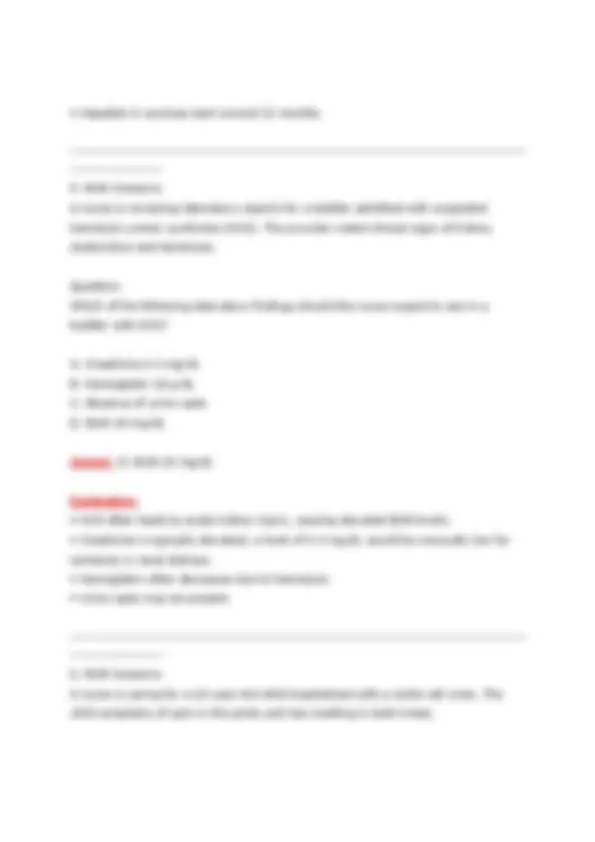
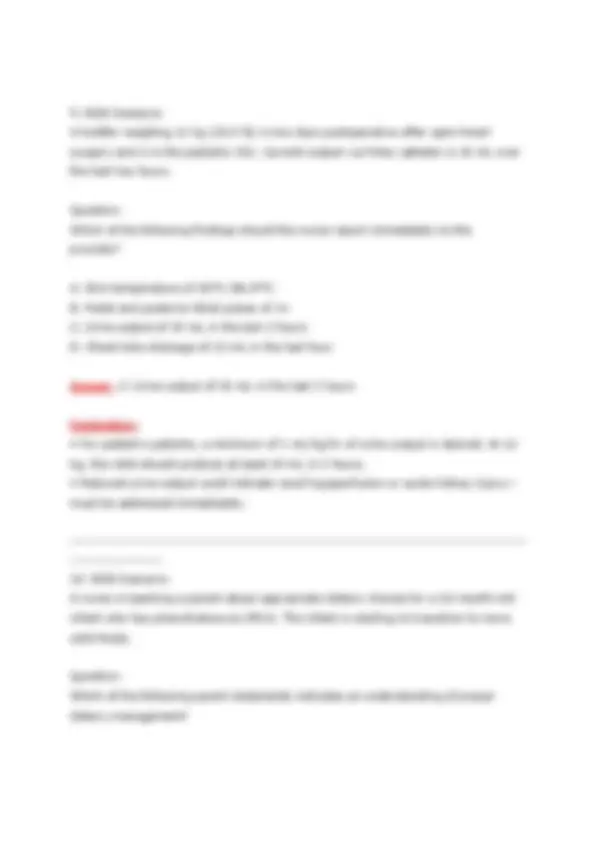
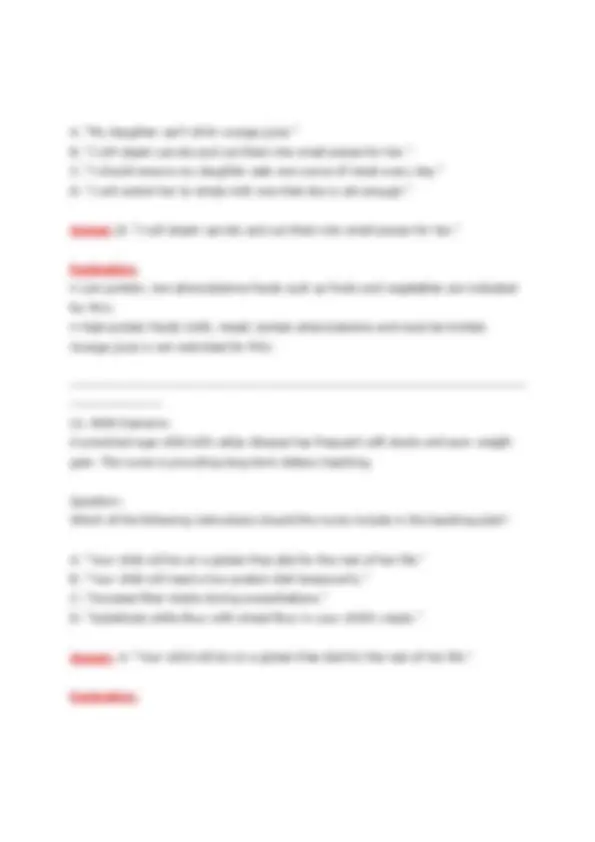
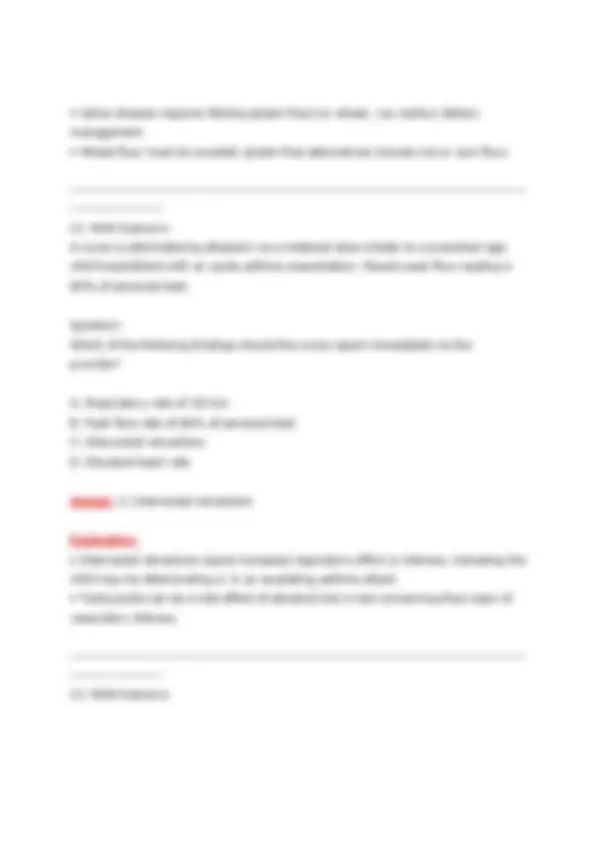
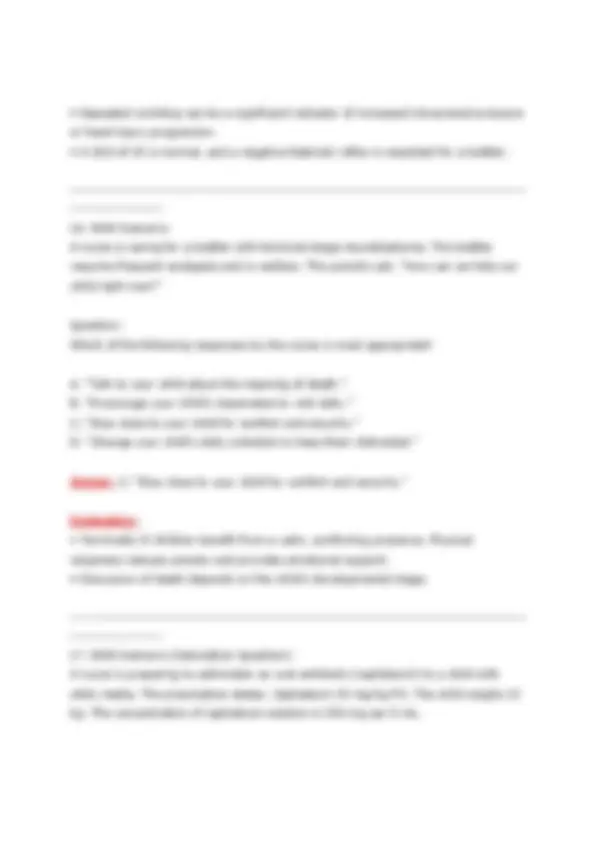
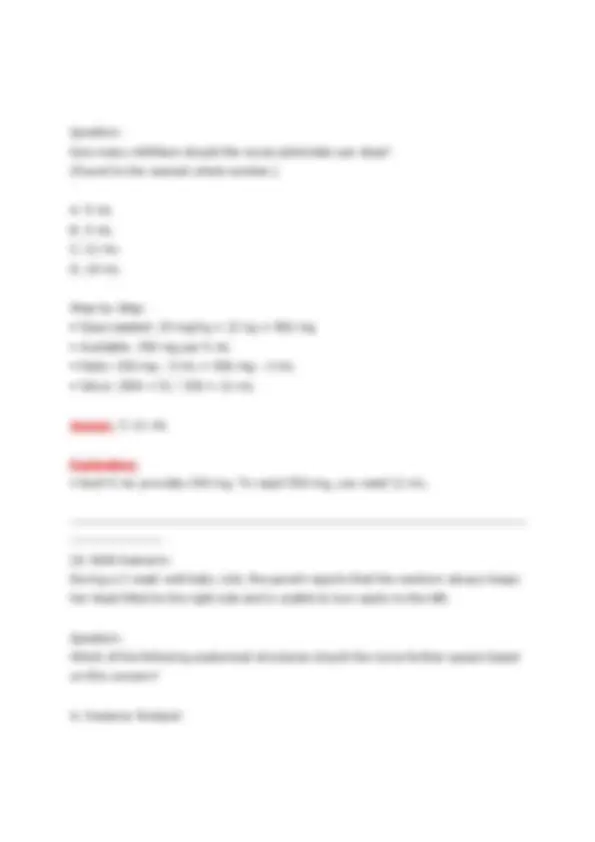
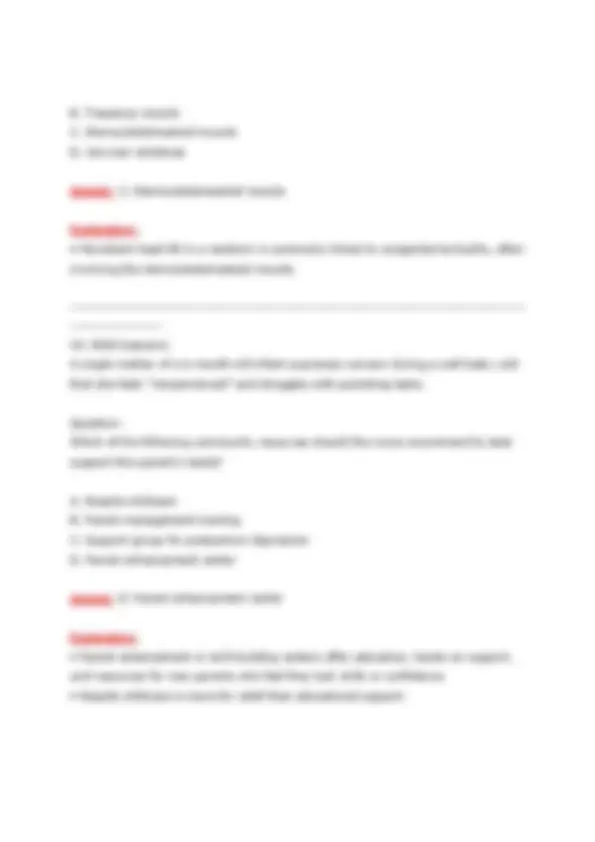
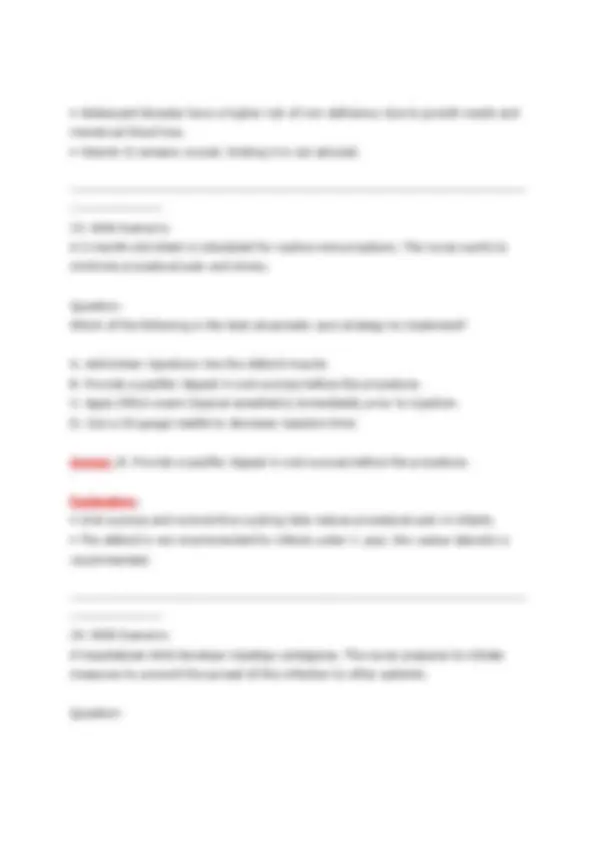
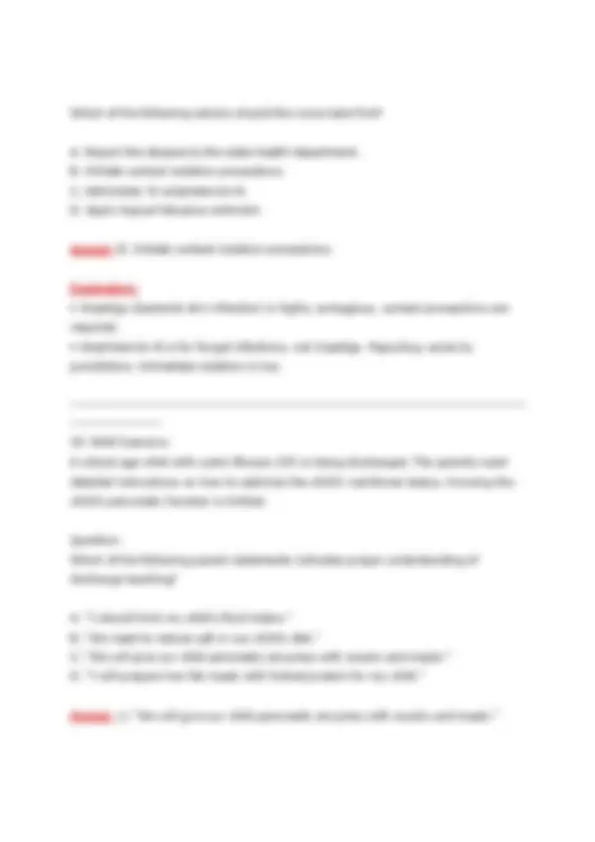
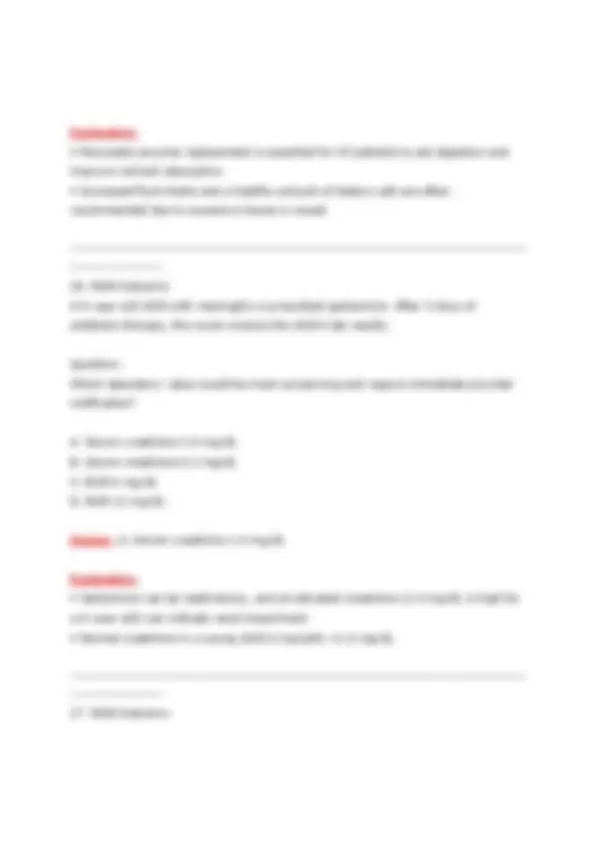
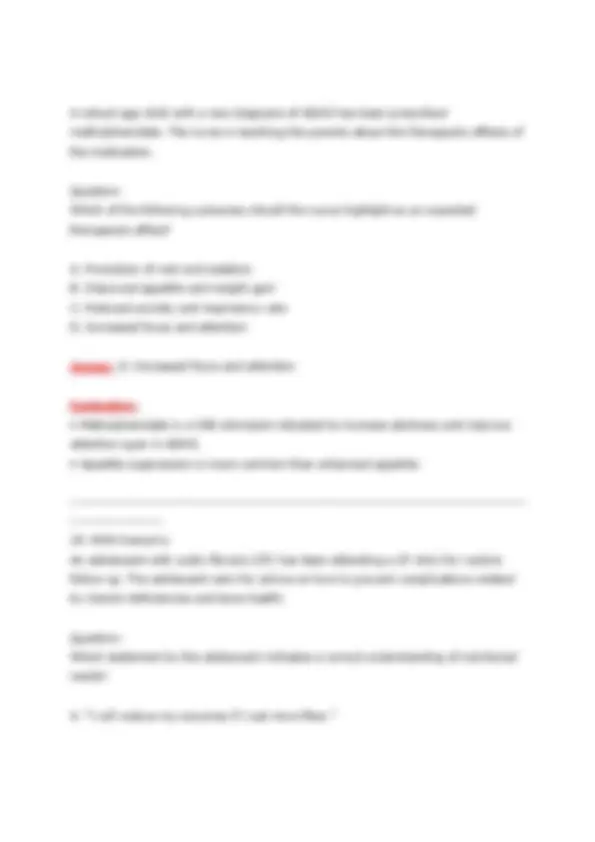
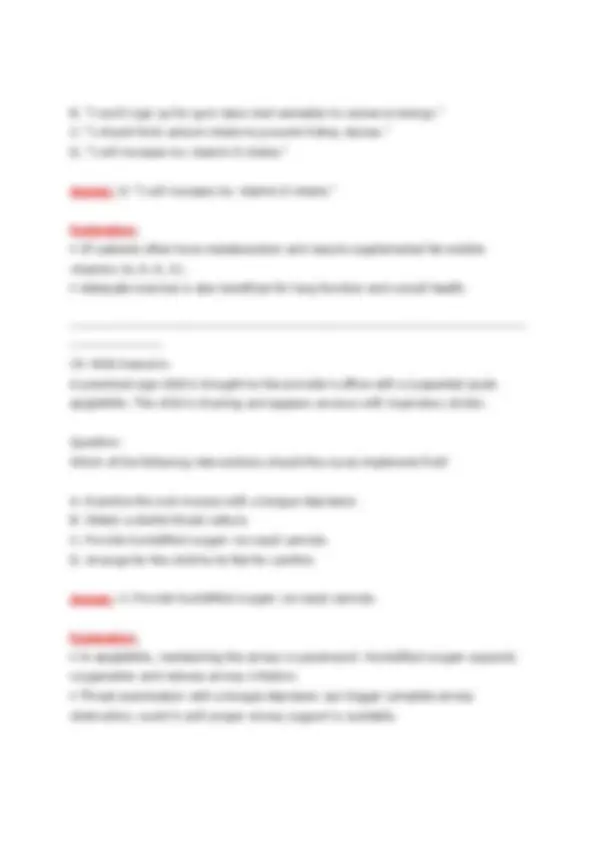
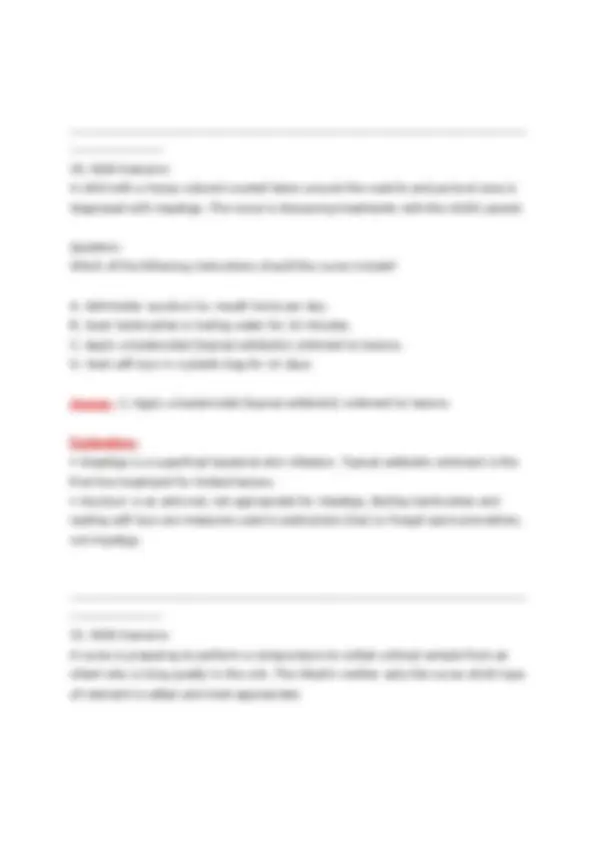
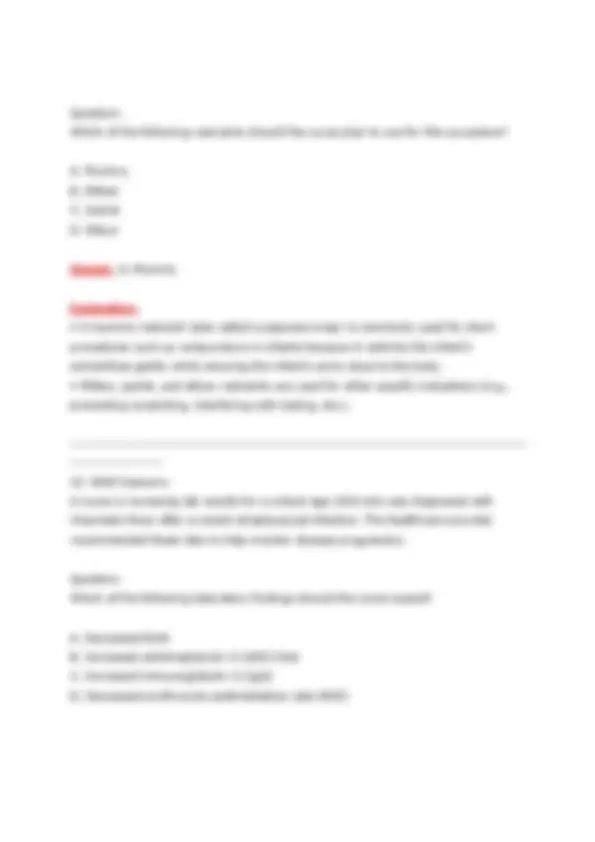
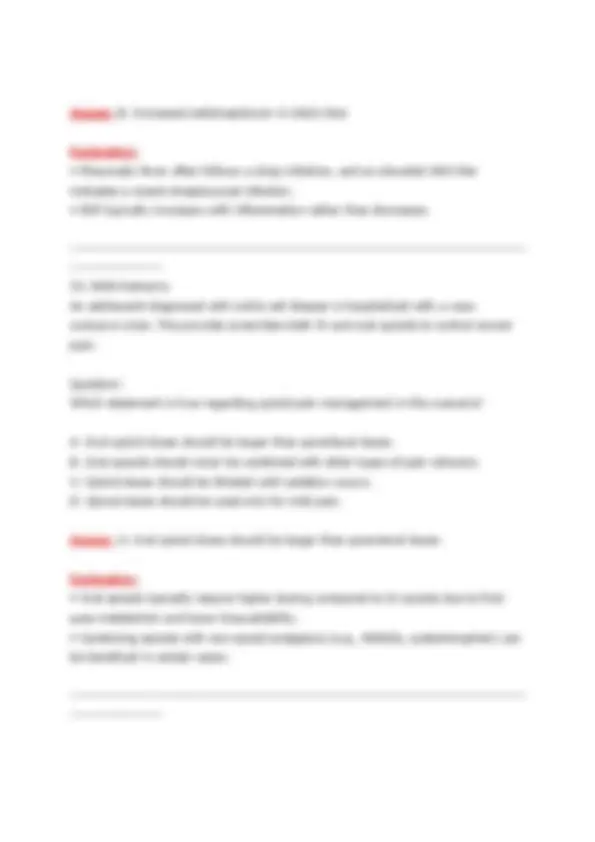
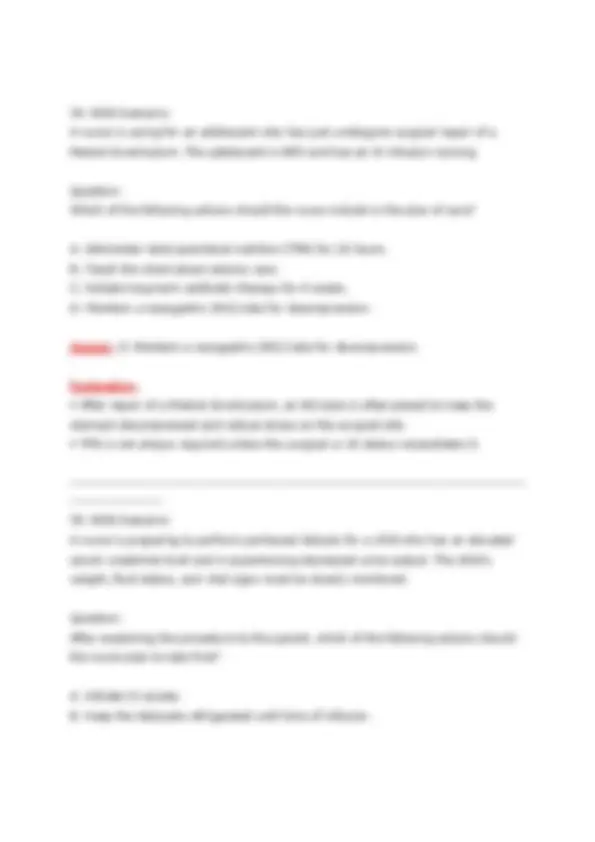
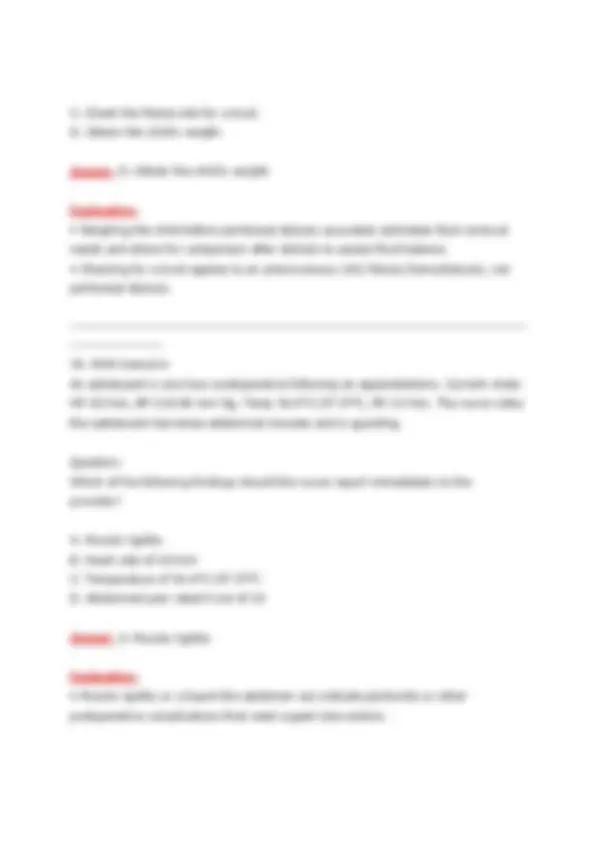
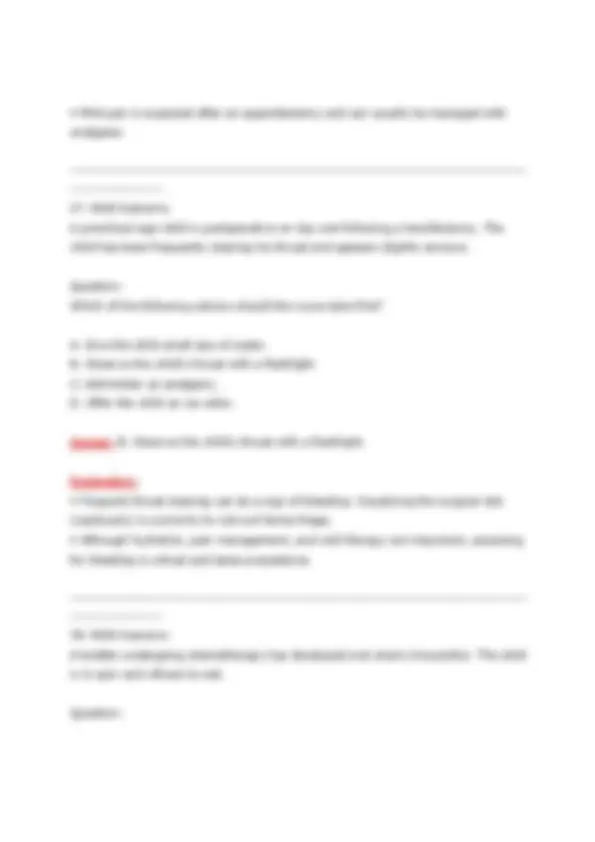
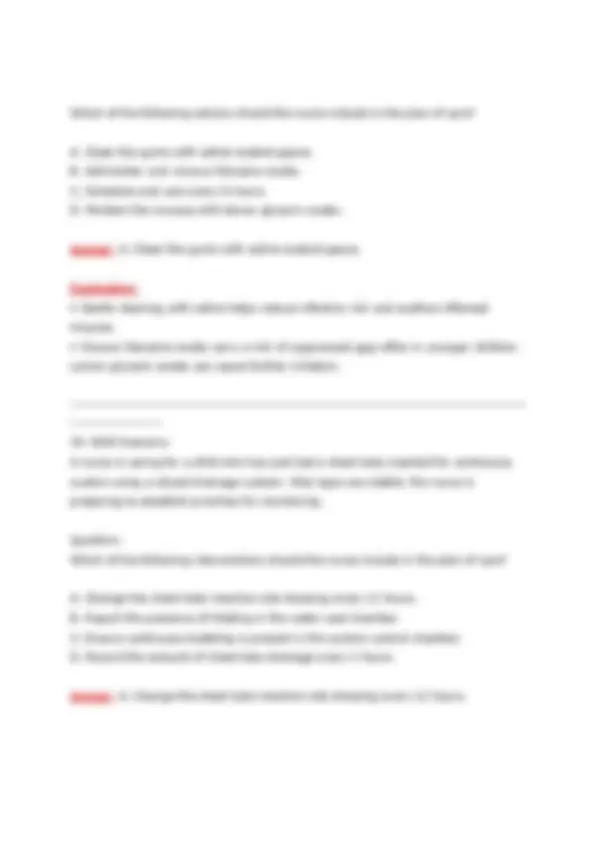
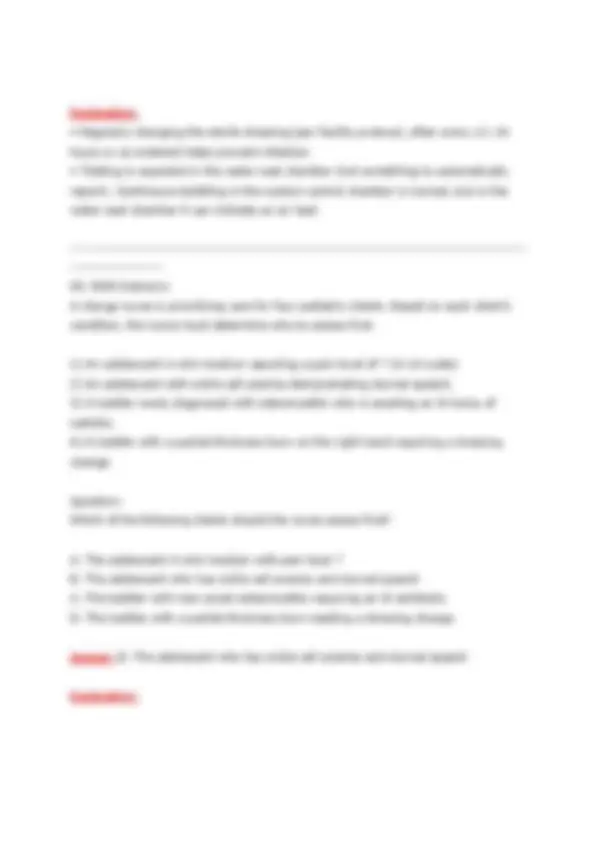
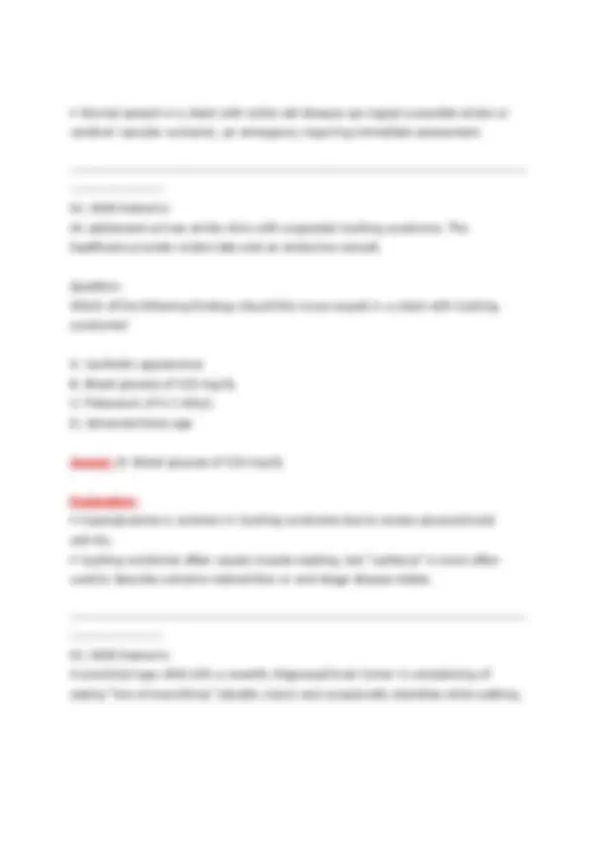
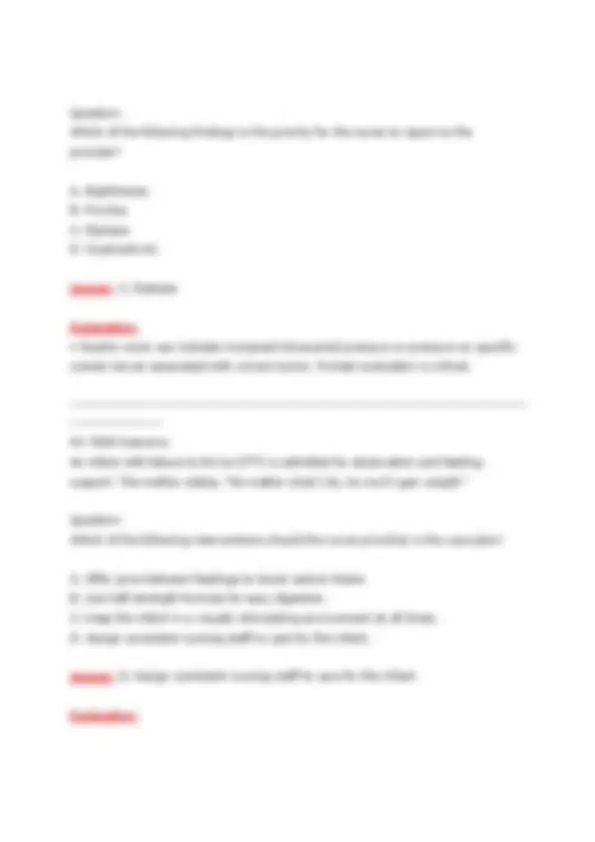
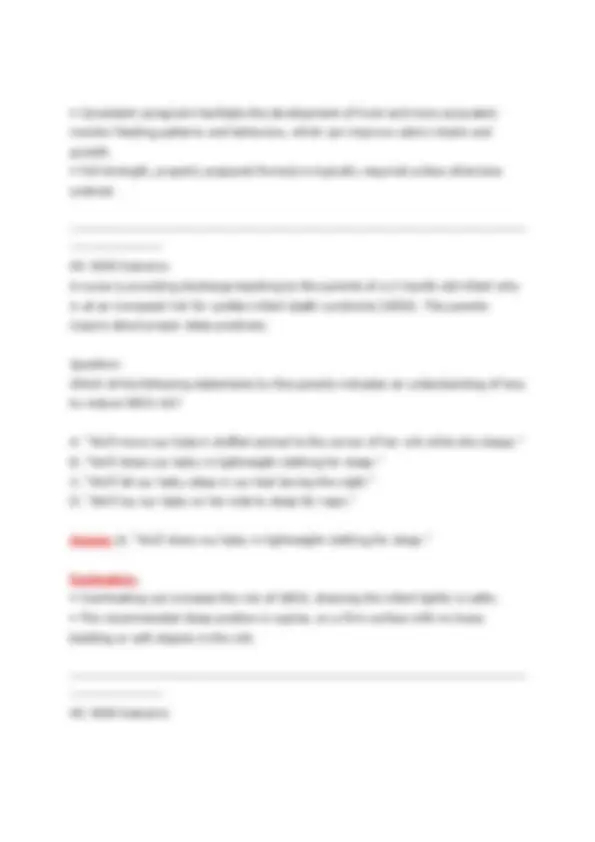
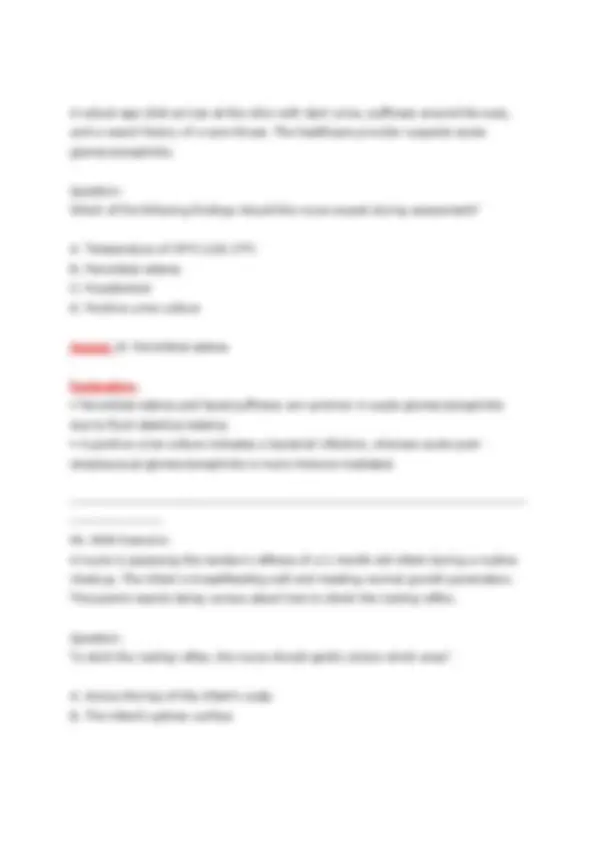
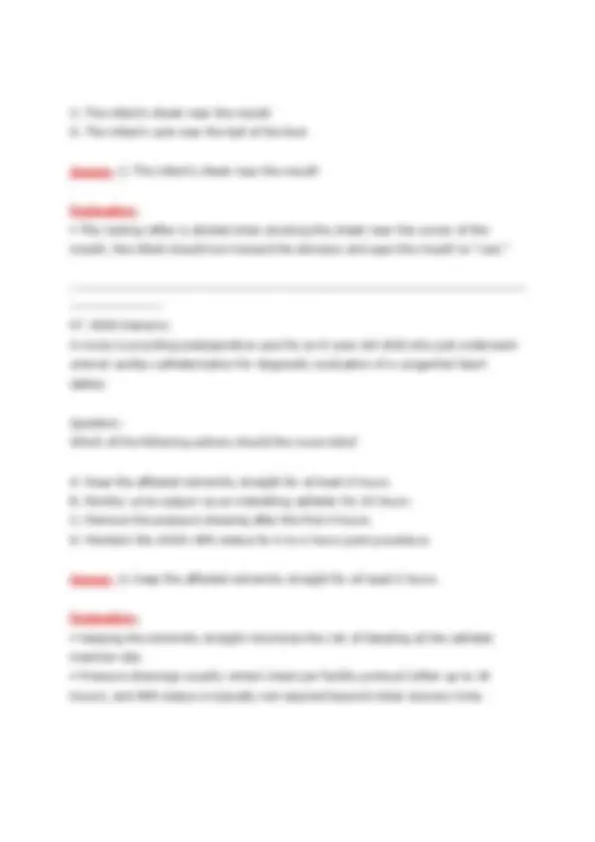
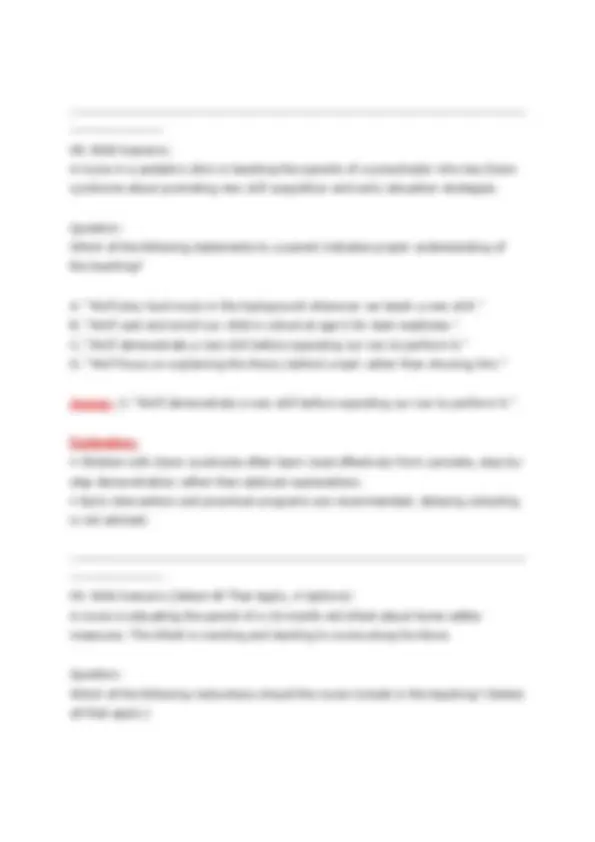
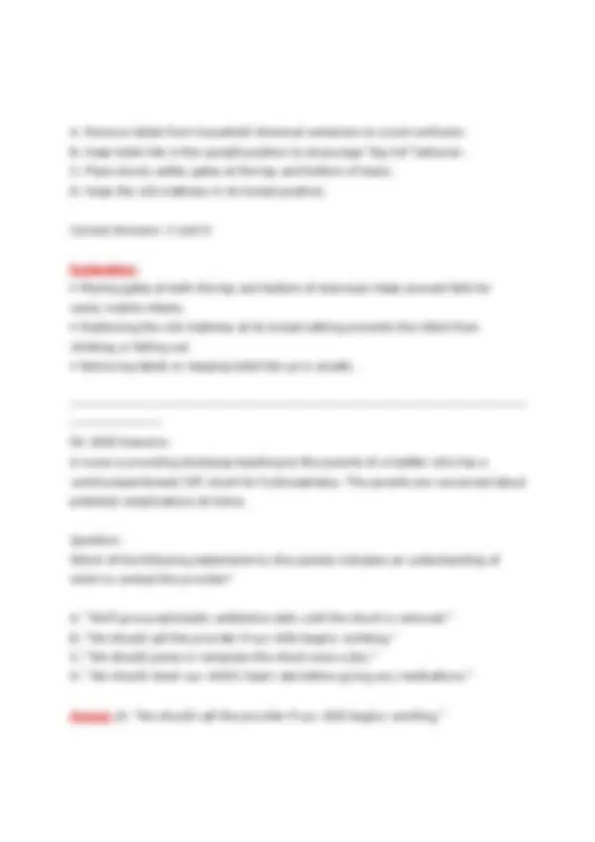
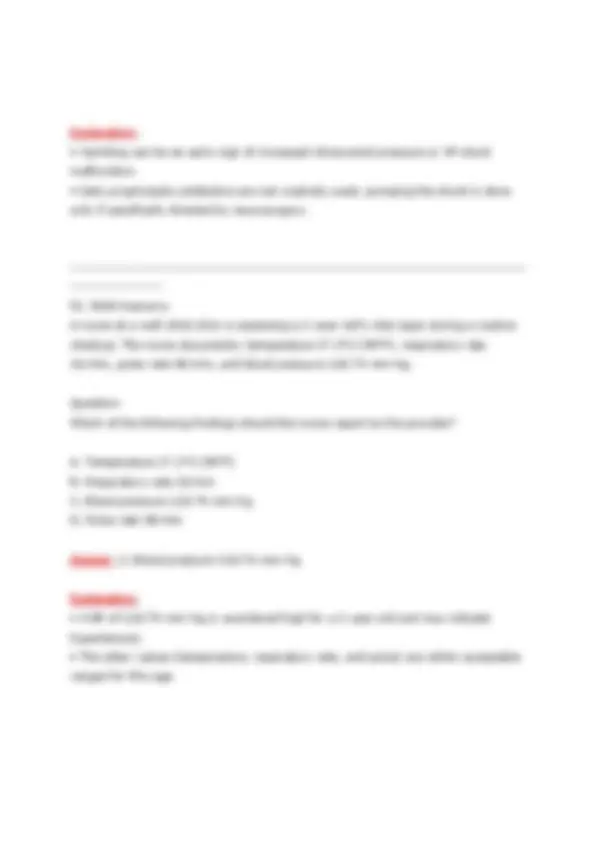
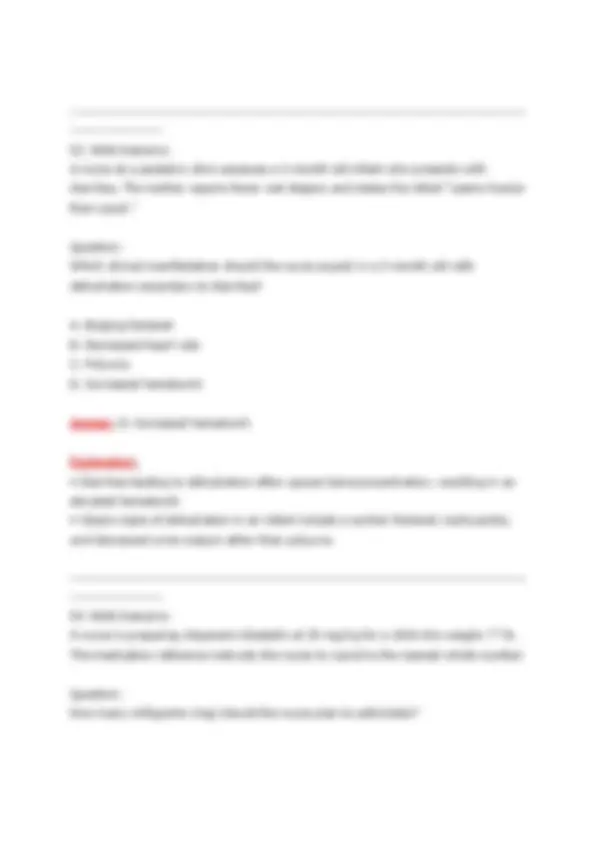
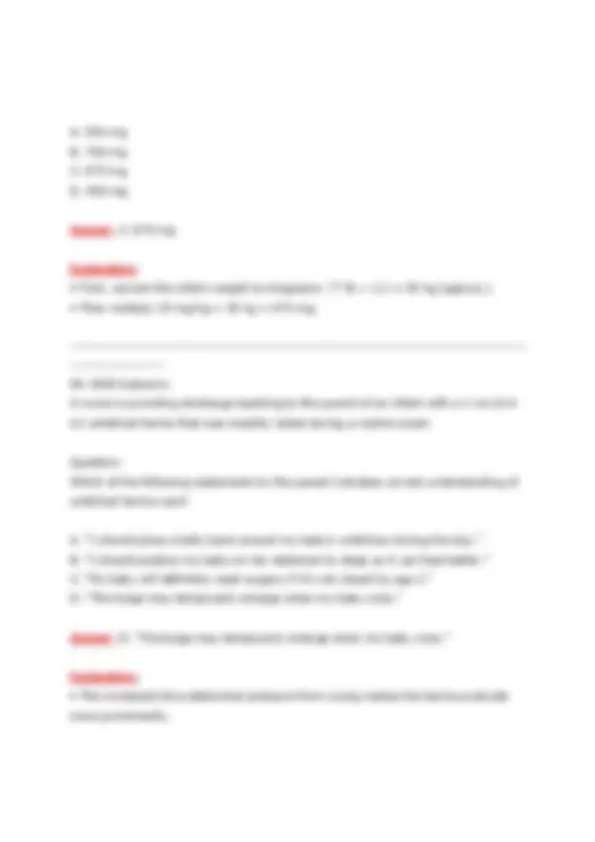
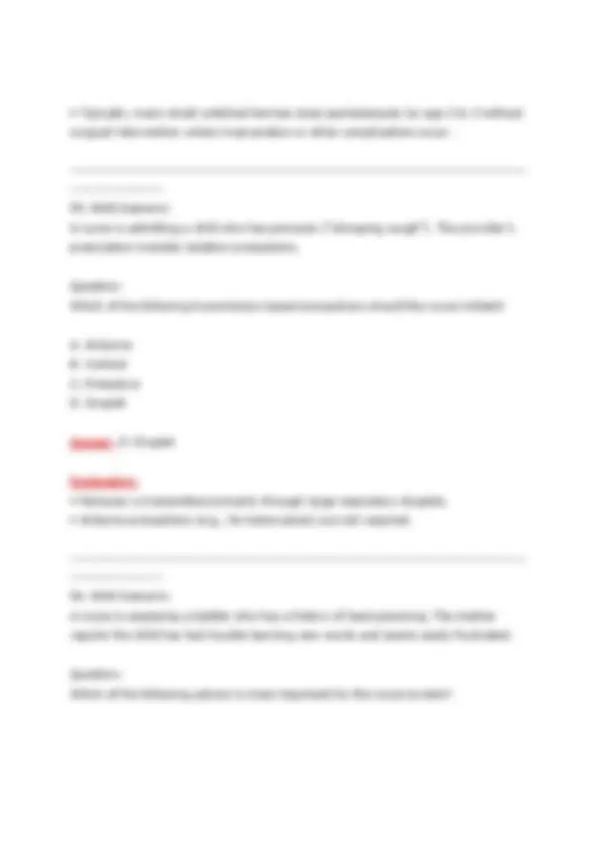
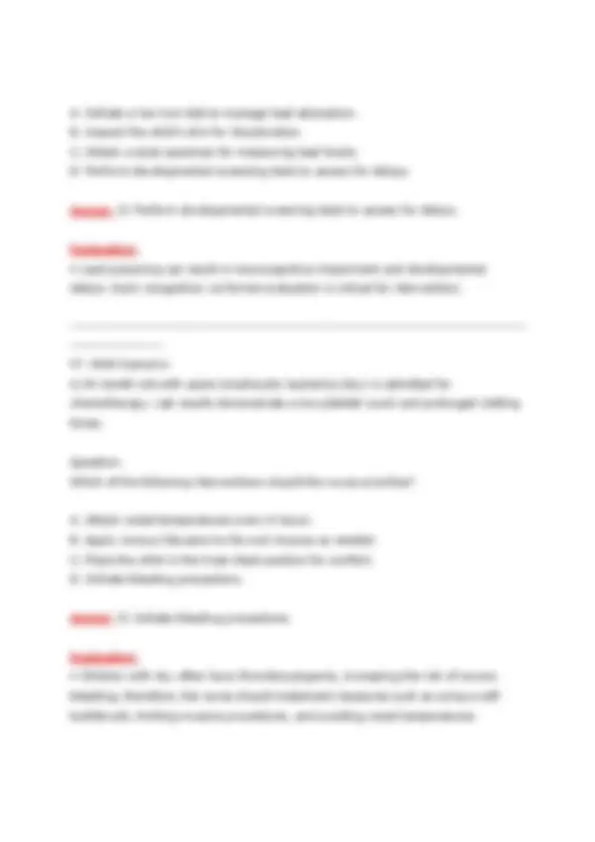
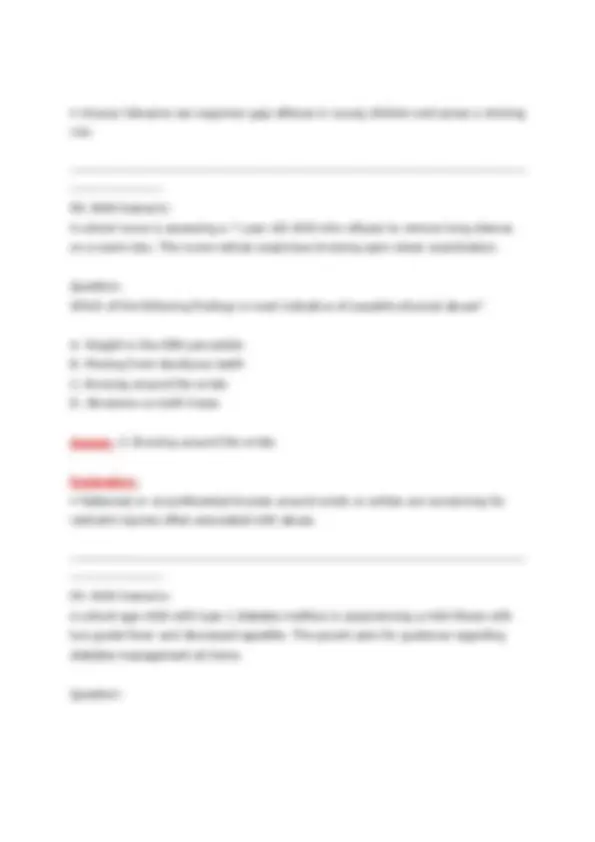
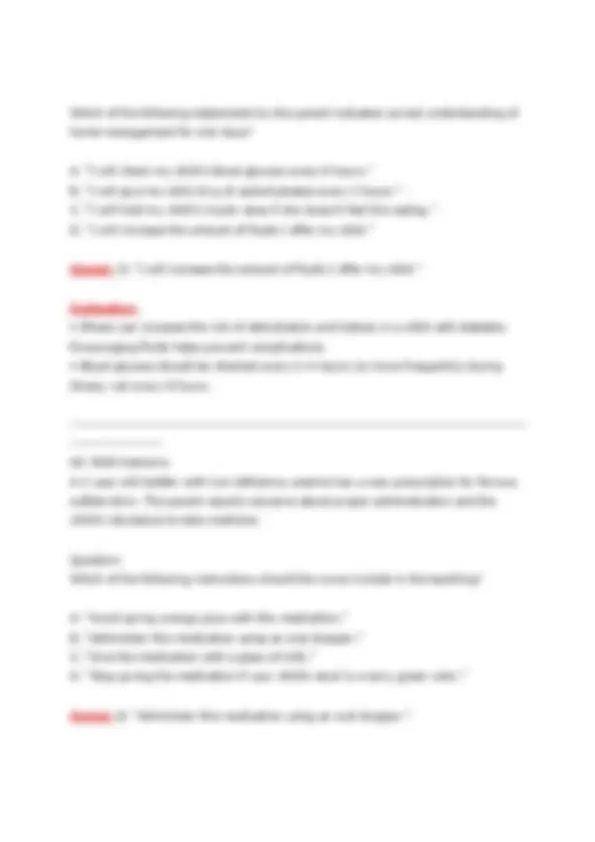
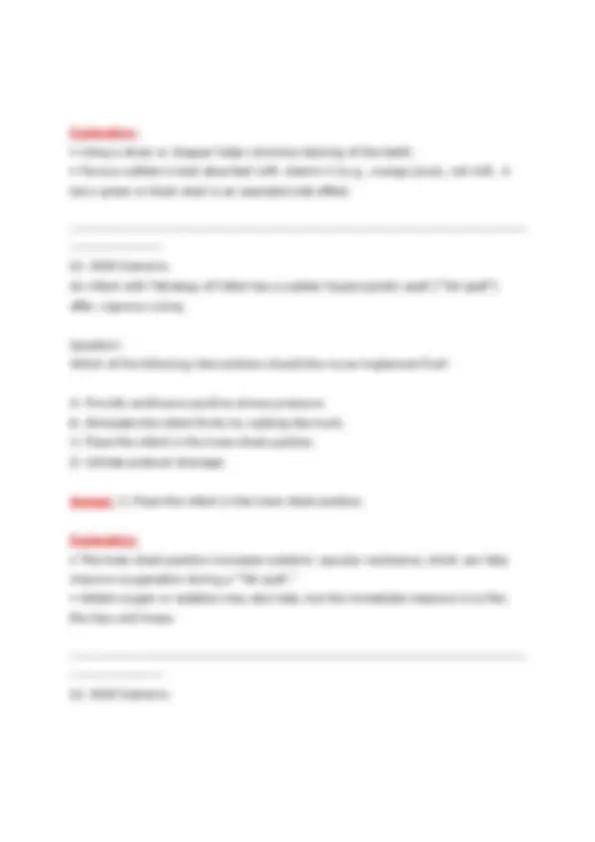
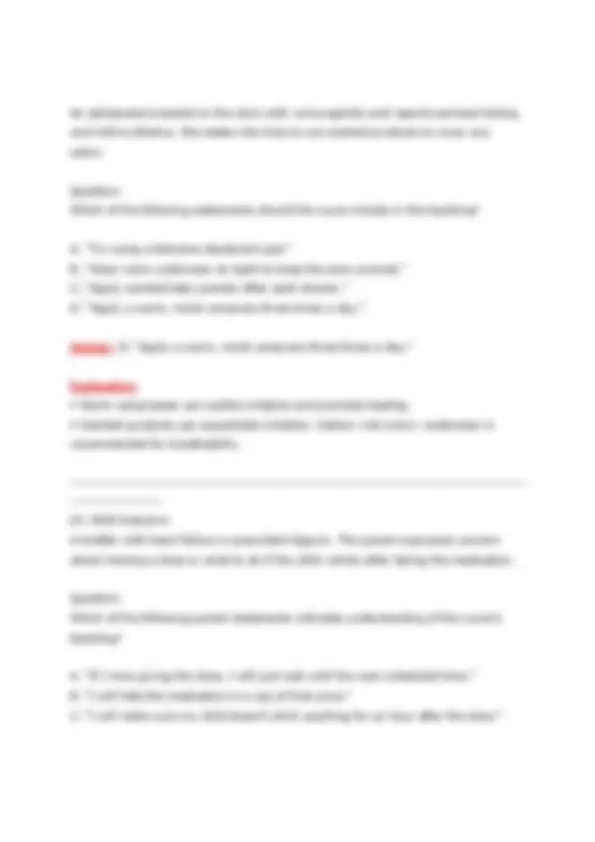
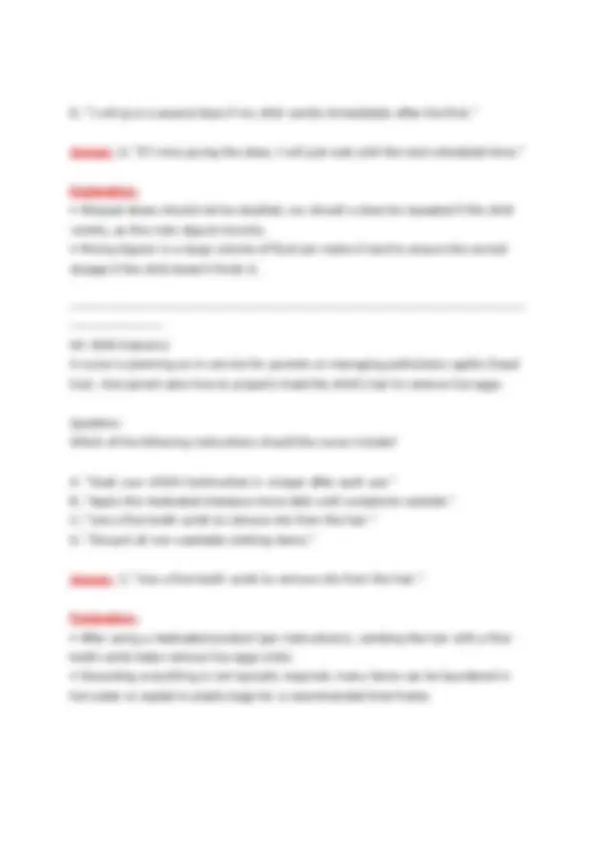
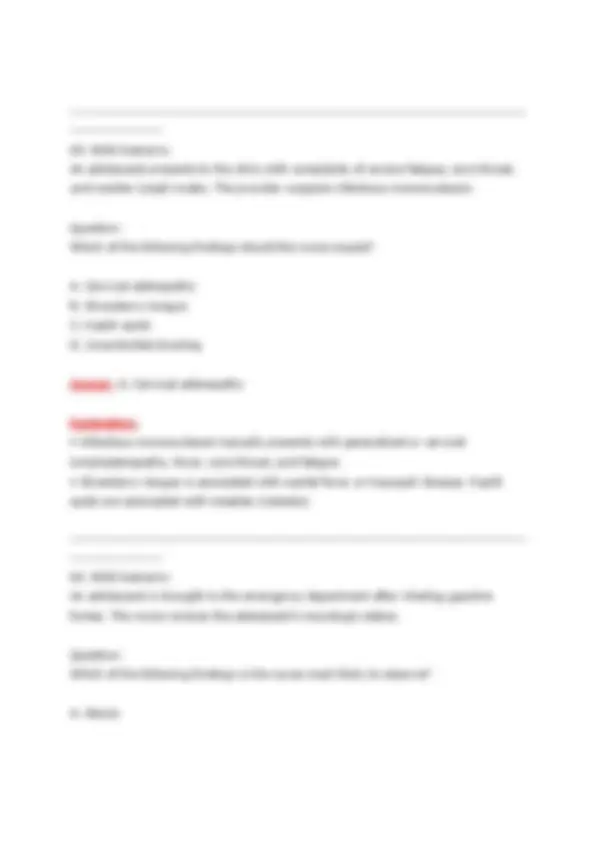
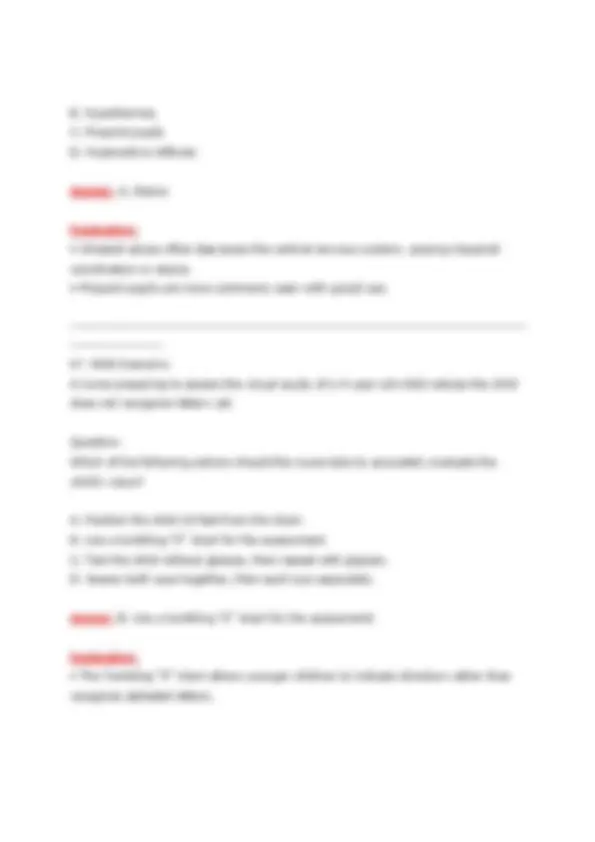
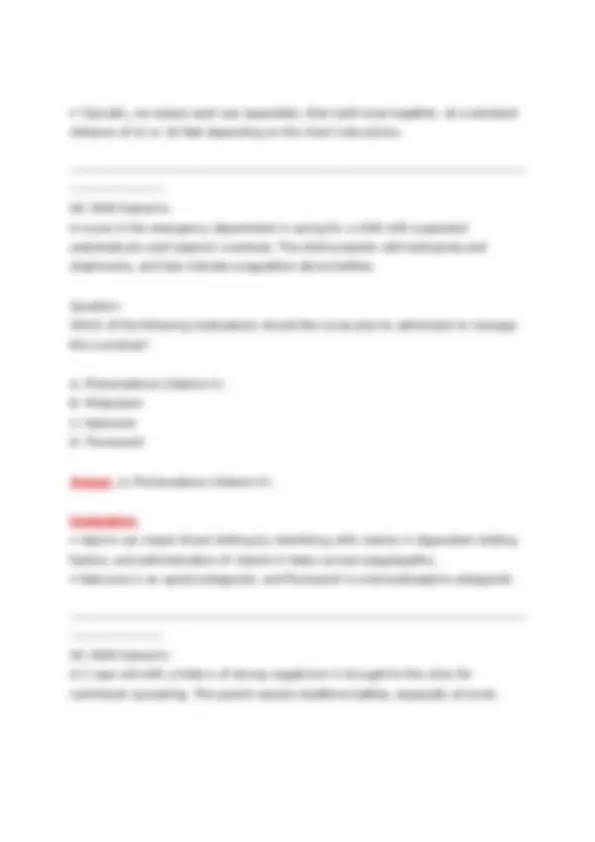
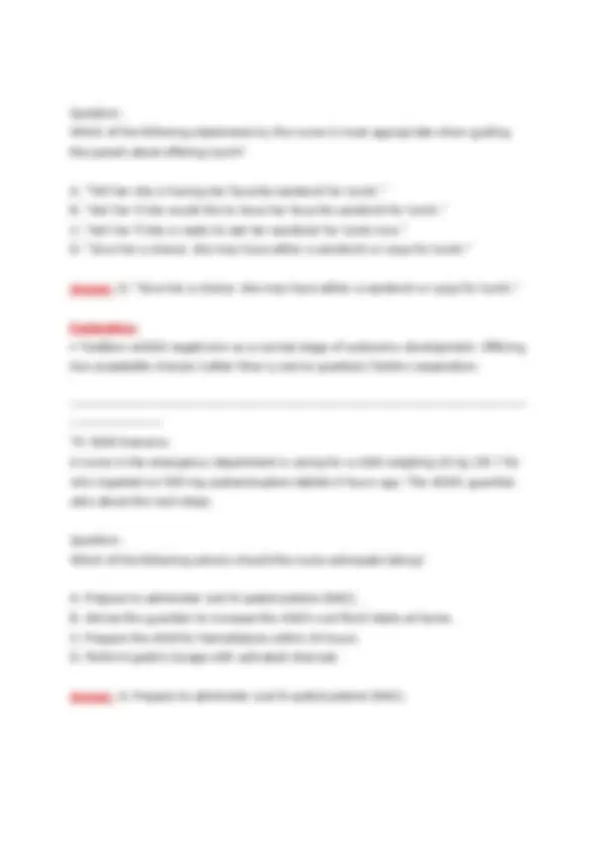
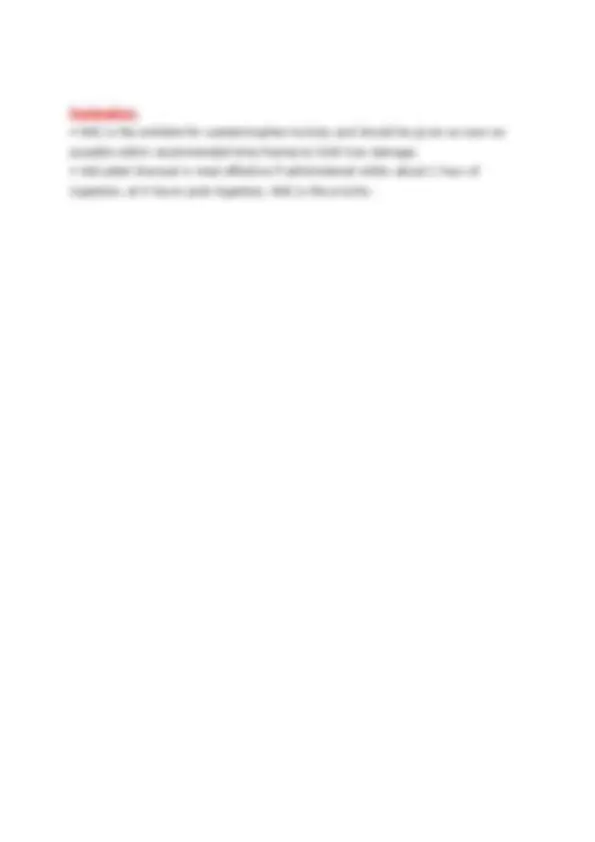


Study with the several resources on Docsity

Earn points by helping other students or get them with a premium plan


Prepare for your exams
Study with the several resources on Docsity

Earn points to download
Earn points by helping other students or get them with a premium plan
Community
Ask the community for help and clear up your study doubts
Discover the best universities in your country according to Docsity users
Free resources
Download our free guides on studying techniques, anxiety management strategies, and thesis advice from Docsity tutors
A series of next generation nclex (ngn)-style questions and answers focused on pediatric nursing. It covers various scenarios and conditions, such as acute glomerulonephritis, seizure disorders, type 1 diabetes mellitus, and respiratory syncytial virus (rsv). Each question is accompanied by a detailed rationale, making it a valuable resource for nursing students preparing for exams or entry-level practical nursing. The content emphasizes critical thinking and application of nursing principles in pediatric care, offering insights into appropriate interventions and assessments. It also includes topics like lactose intolerance, postoperative care after open-heart surgery, and phenylketonuria (pku).
Typology: Exams
1 / 52

This page cannot be seen from the preview
Don't miss anything!













































Question: Which of the following dietary instructions should the nurse include in the teaching?
A. Increase the child’s calcium intake. B. Decrease the child’s sodium intake. C. Increase the child’s intake of carbohydrates. D. Decrease the child’s fat intake.
Answer: B. Decrease the child’s sodium intake
Explanation:
──────────────────────────────────────────────────────────── ────────────
D. Glycosuria
Answer: A. HbA1c of 11.5%
Explanation:
──────────────────────────────────────────────────────────── ────────────
Question: According to the recommended U.S. childhood immunization schedule, which of the following immunizations is typically started in the first 2 months of life?
A. Varicella (VAR) B. Measles, Mumps, Rubella (MMR) C. Inactivated Poliovirus (IPV) D. Hepatitis A (HepA)
Answer: C. Inactivated Poliovirus (IPV)
Explanation:
──────────────────────────────────────────────────────────── ────────────
Question: Which of the following laboratory findings should the nurse expect to see in a toddler with HUS?
A. Creatinine 0.3 mg/dL B. Hemoglobin 18 g/dL C. Absence of urine casts D. BUN 28 mg/dL
Answer: D. BUN 28 mg/dL
Explanation:
Answer: B. Tachypnea
Explanation:
──────────────────────────────────────────────────────────── ────────────
Question: Which of the following instructions should the nurse include?
A. “You can drink milk on an empty stomach to reduce symptoms.” B. “Choose flavored yogurt instead of plain yogurt.” C. “You can tolerate plain milk better than chocolate milk.” D. “Replace milk with nondairy sources of calcium.”
Answer: D. “Replace milk with nondairy sources of calcium.”
Explanation:
──────────────────────────────────────────────────────────── ────────────
Question: Which of the following findings should the nurse report immediately to the provider?
A. Skin temperature of 36°C (96.8°F) B. Pedal and posterior tibial pulses of 2+ C. Urine output of 15 mL in the last 2 hours D. Chest tube drainage of 22 mL in the last hour
Answer: C. Urine output of 15 mL in the last 2 hours
Explanation:
──────────────────────────────────────────────────────────── ────────────
Question: Which of the following parent statements indicates an understanding of proper dietary management?
──────────────────────────────────────────────────────────── ────────────
Question: Which of the following findings should the nurse report immediately to the provider?
A. Respiratory rate of 24/min B. Peak flow rate of 80% of personal best C. Intercostal retractions D. Elevated heart rate
Answer: C. Intercostal retractions
Explanation:
──────────────────────────────────────────────────────────── ────────────
A nurse is caring for a school-age child (7 years old) who is 1 hour postoperative following a tonsillectomy. The child is drowsy but arousable. The family is at the bedside seeking guidance.
Question: Which of the following actions has the highest priority for this child at this time?
A. Offer cranberry juice frequently. B. Encourage the child to cough effectively. C. Observe for frequent swallowing. D. Position the child supine for comfort.
Answer: C. Observe for frequent swallowing.
Explanation:
──────────────────────────────────────────────────────────── ────────────
Question: Which of the following clinical findings are most characteristic of childhood heart failure exacerbation?
A. Bradycardia, weight loss, bounding pulses
──────────────────────────────────────────────────────────── ────────────
Question: Which of the following responses by the nurse is most appropriate?
A. “Talk to your child about the meaning of death.” B. “Encourage your child’s classmates to visit daily.” C. “Stay close to your child for comfort and security.” D. “Change your child’s daily schedule to keep them distracted.”
Answer: C. “Stay close to your child for comfort and security.”
Explanation:
──────────────────────────────────────────────────────────── ────────────
Question: How many milliliters should the nurse administer per dose? (Round to the nearest whole number.)
A. 5 mL B. 9 mL C. 11 mL D. 15 mL
Step-by-Step:
Answer: C. 11 mL
Explanation:
Question: Which of the following anatomical structures should the nurse further assess based on this concern?
A. Posterior fontanel
Question: Which of the following assessment findings should the nurse address as the top priority?
A. Regurgitation B. Wheezing C. Excessive crying D. Weight loss
Answer: B. Wheezing
Explanation:
──────────────────────────────────────────────────────────── ────────────
Question:
Which of the following clinical manifestations is consistent with severe dehydration in an infant?
A. Capillary refill of 3 seconds B. Rapid respirations C. Bradycardia D. Warm extremities
Answer: B. Rapid respirations
Explanation:
──────────────────────────────────────────────────────────── ────────────
Question: Which nutritional recommendation should the nurse stress?
A. Consume 1,500 to 1,700 calories per day. B. Decrease vitamin D intake once menstruation begins. C. Increase daily dietary iron intake. D. Limit sodium intake to 3,000 grams per day.
Answer: C. Increase daily dietary iron intake.
Explanation:
Which of the following actions should the nurse take first?
A. Report the disease to the state health department. B. Initiate contact isolation precautions. C. Administer IV amphotericin B. D. Apply topical lidocaine ointment.
Answer: B. Initiate contact isolation precautions.
Explanation:
──────────────────────────────────────────────────────────── ────────────
Question: Which of the following parent statements indicates proper understanding of discharge teaching?
A. “I should limit my child’s fluid intake.” B. “We need to reduce salt in our child’s diet.” C. “We will give our child pancreatic enzymes with snacks and meals.” D. “I will prepare low-fat meals with limited protein for my child.”
Answer: C. “We will give our child pancreatic enzymes with snacks and meals.”
Explanation:
──────────────────────────────────────────────────────────── ────────────
Question: Which laboratory value would be most concerning and require immediate provider notification?
A. Serum creatinine 1.4 mg/dL B. Serum creatinine 0.3 mg/dL C. BUN 6 mg/dL D. BUN 12 mg/dL
Answer: A. Serum creatinine 1.4 mg/dL
Explanation:
──────────────────────────────────────────────────────────── ────────────